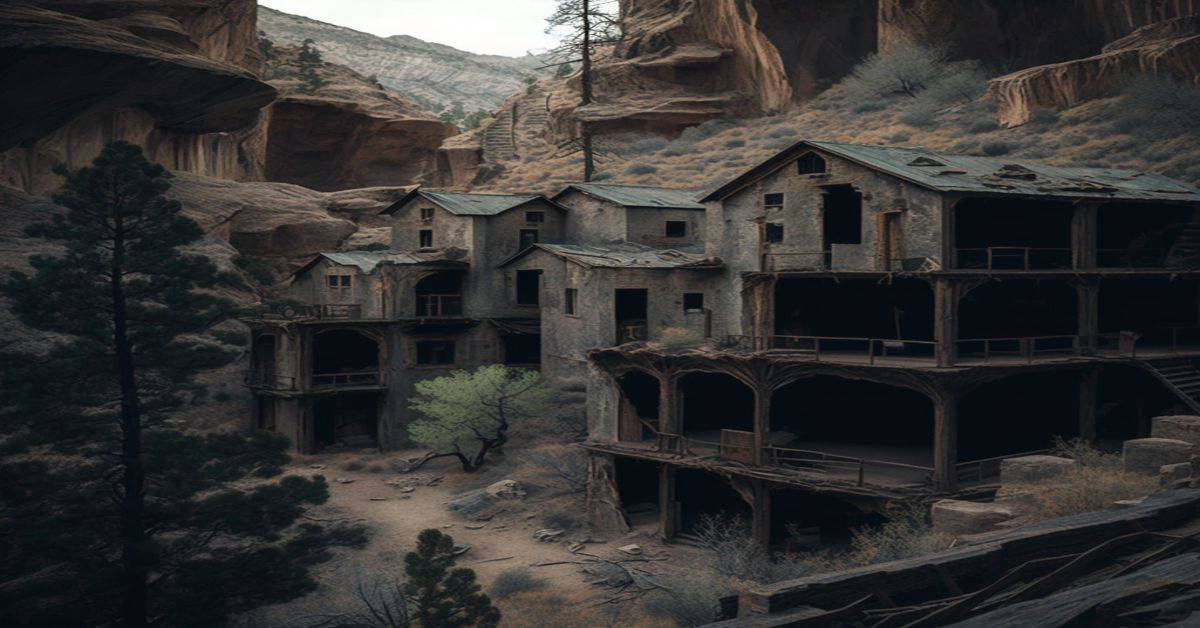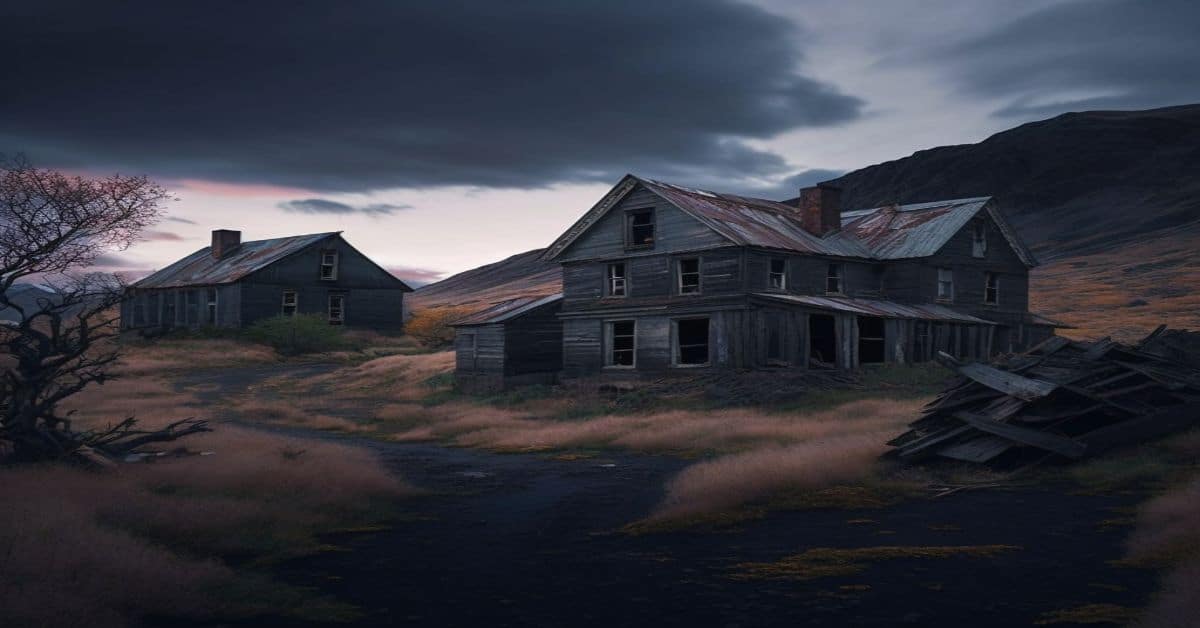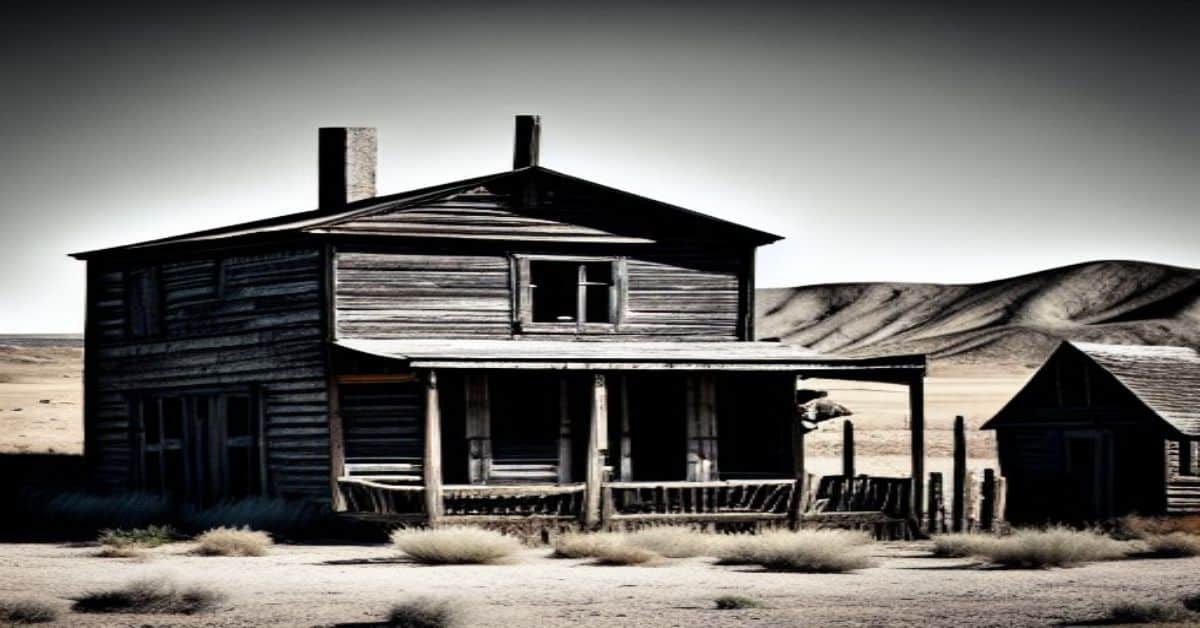Nestled in Grand County, Utah lies the abandoned ghost town of Sego, a testament to the region’s coal mining history. Originally discovered by a local rancher, Harry Ballard, Sego was eventually sold to Salt Lake City investors in 1911 for its coal mining potential. However, the town’s water supply issues and other challenges made it difficult for the investors to turn a profit, resulting in miners being paid in script instead of actual currency.
Despite its history of economic struggles, Sego remains an intriguing destination for history buffs and adventure seekers alike. The town is home to various well-preserved structures, including a stone building built into the mountainside, a cemetery, an old roofless stone company store, and the remains of a boarding house.
The surrounding landscape is also rich with history, with nearby petroglyphs providing a glimpse into the lives and beliefs of the region’s early inhabitants. Whether exploring the town’s ruins or admiring the surrounding natural beauty, visiting Sego offers a unique and unforgettable experience.
Key Takeaways
- Sego is an abandoned ghost town in Grand County, Utah with a history of coal mining.
- Despite being sold to Salt Lake City investors in 1911 for its coal mining potential, the town faced challenges with water supply and other issues, leading to little or no profit for investors.
- The closure of the mine in 1947 had a devastating impact on the town, with many families forced to leave in search of work elsewhere.
- Sego is a must-see destination for history buffs, outdoor enthusiasts, and those looking for a unique adventure, with well-preserved structures including a stone building built into the mountainside, a cemetery, an old roofless stone company store, and remains of a boarding house. Additionally, the surrounding landscape is rich with history and nearby petroglyphs created by Fremont and Ute tribes over a thousand years ago offer a glimpse into the cultural and historical significance of the area.
Coal Mining History
The history of coal mining in Sego, Utah includes the discovery of coal by Harry Ballard, a rancher and farmer.
In 1911, the mine was sold to Salt Lake City investors who hoped to profit from the rich coal reserves. However, the mine faced a series of challenges, including difficulties with water supply and other problems which led to little or no profit for investors.
Miners also faced poor working conditions and received script instead of pay for up to a year. The miners eventually joined the United Mine Workers Union in 1933, but the mine closed in 1947, significantly impacting the local economy.
Despite the challenges faced by the miners, the coal mining industry played a significant role in the local economy. The discovery of coal brought jobs and opportunities to the area, and the town of Sego grew as a result.
The miners and their families built homes and businesses, and the town became a thriving community. However, the closure of the mine had a devastating impact on the town, with many families forced to leave in search of work elsewhere.
Today, the mining history of Sego serves as a reminder of the importance of the coal industry in shaping the history and economy of the American West.
Remaining Structures
Several structures still stand in the abandoned coal mining community of Sego, providing visitors with a glimpse into the town’s past.
The most notable structure is a stone building built into the mountainside that once served as a hotel and saloon for the miners. The architectural details of the building are impressive, with its stone walls and arched doorways. Visitors can explore the ruins of the building, imagining what life was like for the miners who once lived and worked in Sego.
In addition to the hotel and saloon, several other structures remain in Sego. The Sego Cemetery is a somber reminder of the town’s past, with its weathered headstones and markers. The old roofless stone company store provides a glimpse into the town’s commercial past, while the collapsed boarding house speaks to the harsh living conditions endured by the miners.
Exploring the remaining structures in Sego is a unique experience that allows visitors to connect with the town’s history and gain a deeper understanding of the challenges those people face.
“Due to poor quality and quantity of water, the town never flourished beyond a few hundred people at most. Though high coal production occurred from 1920 to 1947, costs finally outgrew profits and the town dwindled. A flash flood sometime in the 1950’s laid waste to the few people remaining.”
https://www.roadtripryan.com/go/t/utah/moab/sego-ghost-town
Nearby Petroglyphs
Located in close proximity to the ghost town of Sego are petroglyphs that offer a fascinating glimpse into the cultural and historical significance of the area. These ancient rock carvings are located along a scenic hiking trail that winds through the rugged landscape of eastern Utah.
Exploring the Petroglyphs: A Journey Through Time allows visitors to immerse themselves in the region’s rich history and marvel at the intricate designs etched into the sandstone cliffs.
The Natural Beauty of Sego’s Petroglyphs is truly breathtaking. The carvings depict various subjects, including animals, geometric shapes, and human figures, and are thought to have been created by the Fremont and Ute tribes over a thousand years ago.
Visitors can spend hours wandering along the trail, marveling at the intricate details of these ancient artworks and imagining what life was like for the people who created them.
Whether you’re a history buff, an outdoor enthusiast, or simply looking for a unique adventure, the petroglyphs of Sego are a must-see destination that will leave you awestruck and inspired.
Frequently Asked Questions
What was the population of Sego at its peak?
Population statistics for Sego at its peak are unknown. Despite the town’s brief success in coal mining, historical context reveals issues with water supply and miners receiving script instead of pay.
Was there any significant event that led to the closure of the mine?
A combination of labor strikes and economic downturns caused the closure of Sego’s coal mine. The miners joined the United Mine Workers Union in 1933, but ultimately, the mine could not turn a profit and closed in 1947.
Are there any legends or ghost stories associated with Sego?
Sego, UT may seem like just another abandoned town, but its history has given rise to ghostly sightings and local folklore. Paranormal investigations and haunted tours have brought visitors eager to experience the eerie atmosphere of this once-thriving mining community.
Is it possible to hike or explore the surrounding mountains and canyons?
Hiking trails in the natural landscapes surrounding Sego offer opportunities for exploration. The nearby mountains and canyons have a rich history and geological diversity, providing a unique experience for outdoor enthusiasts.
What is the nearest town or city to Sego and are there any accommodations available nearby?
The nearest town to Sego, UT is Thompson, which is approximately 22 miles away. No accommodations are available in Sego, but Thompson and nearby Green River offer lodging options for visitors.


